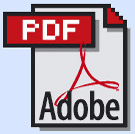Thinking at the Interface: A Review of the 2007 HASTAC Electronic Techtonics Conference
About the Author: Nicole Starosielski is a PhD student in Film and Media Studies at UCSB. Her current research interests include media historiography, perception and affect of digital media, and 3-D animation environments. She is also a media artist working in the integration of theory and production at the intersection of the humanities, sciences and arts. She has participated in the UCSB IGERT program in Interactive Digital Multimedia and is currently the research assistant for UCSB’s Center for Film, Television and New Media. Her recent projects include TechConnect (a mockumentary about technology and community), Bleach (an experimental ethnography on race, gender and family) and Minotour (a location-aware mobile tour application that weaves a spatial tale from Wikipedia). Read more about the author.
Summary
From April 19th-21st, 2007, HASTAC (Humanities, Arts, Science, and Technology Advanced Collaboratory) held the “Electronic Techtonics: Thinking at the Interface” conference at Duke University in Durham, North Carolina. It marked the culmination of the In|Formation Year, a year long mashup of public programming, technological innovation, and interdisciplinary discussion on the humanistic dimensions of technology. “Electronic Techtonics” brought together a variety of perspectives on the material interface and itself served as an interface, in the broader sense of the word, between a broad range of disciplinary approaches. The concepts in circulation ranged from newly proposed theories for the interface, to the exploration of new interfaces, to a critical cultural analysis of how interfaces are emerging, operating, and being deployed. The following report summarizes some of the key panels and events at the conference; and also reflects on their implications for the Transliteracies Project. (more…)

